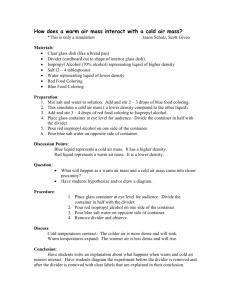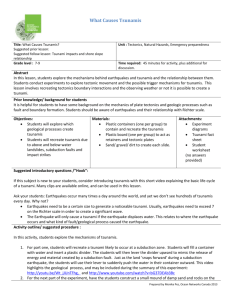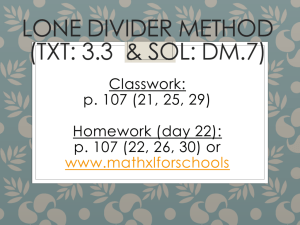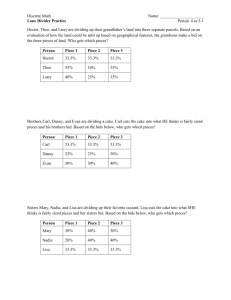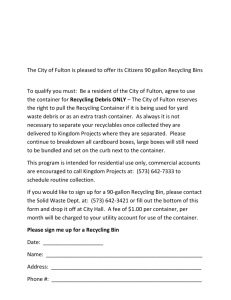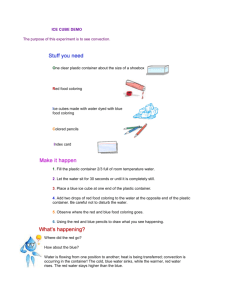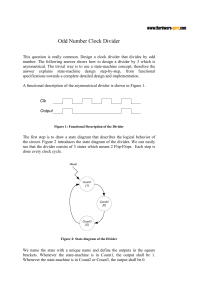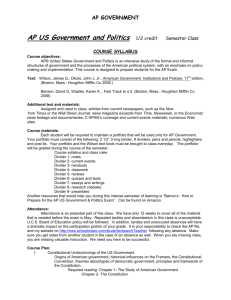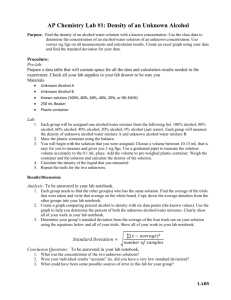What causes tsunamis, how to construct experiment sheet
advertisement
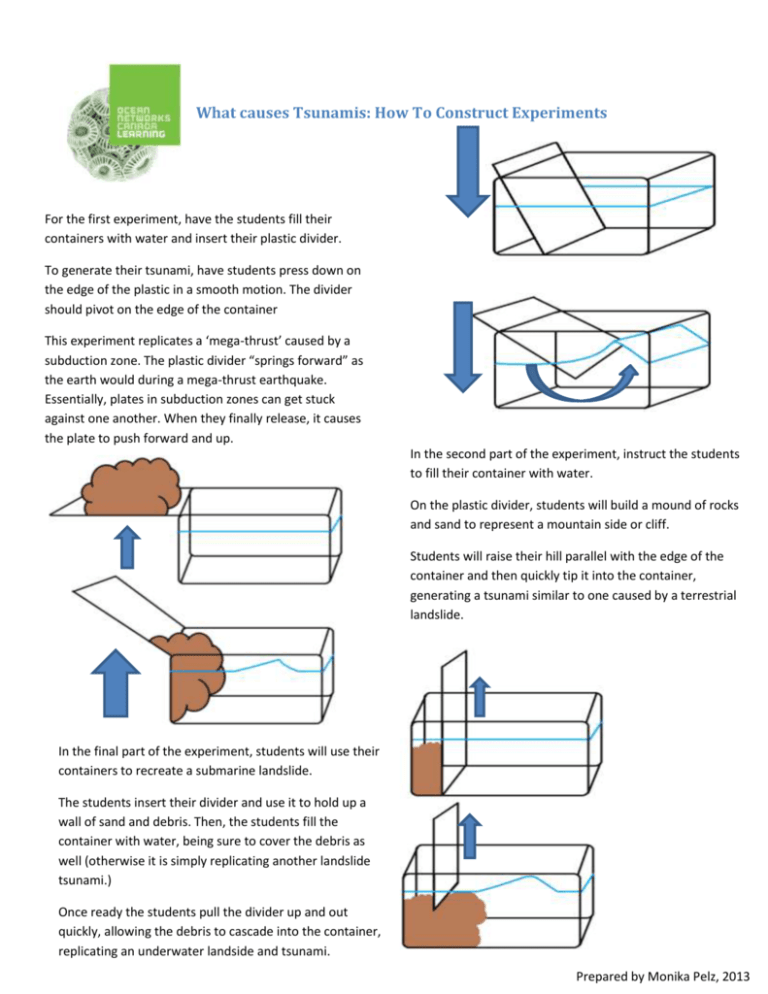
What causes Tsunamis: How To Construct Experiments For the first experiment, have the students fill their containers with water and insert their plastic divider. To generate their tsunami, have students press down on the edge of the plastic in a smooth motion. The divider should pivot on the edge of the container This experiment replicates a ‘mega-thrust’ caused by a subduction zone. The plastic divider “springs forward” as the earth would during a mega-thrust earthquake. Essentially, plates in subduction zones can get stuck against one another. When they finally release, it causes the plate to push forward and up. In the second part of the experiment, instruct the students to fill their container with water. On the plastic divider, students will build a mound of rocks and sand to represent a mountain side or cliff. Students will raise their hill parallel with the edge of the container and then quickly tip it into the container, generating a tsunami similar to one caused by a terrestrial landslide. In the final part of the experiment, students will use their containers to recreate a submarine landslide. The students insert their divider and use it to hold up a wall of sand and debris. Then, the students fill the container with water, being sure to cover the debris as well (otherwise it is simply replicating another landslide tsunami.) Once ready the students pull the divider up and out quickly, allowing the debris to cascade into the container, replicating an underwater landside and tsunami. Prepared by Monika Pelz, 2013
